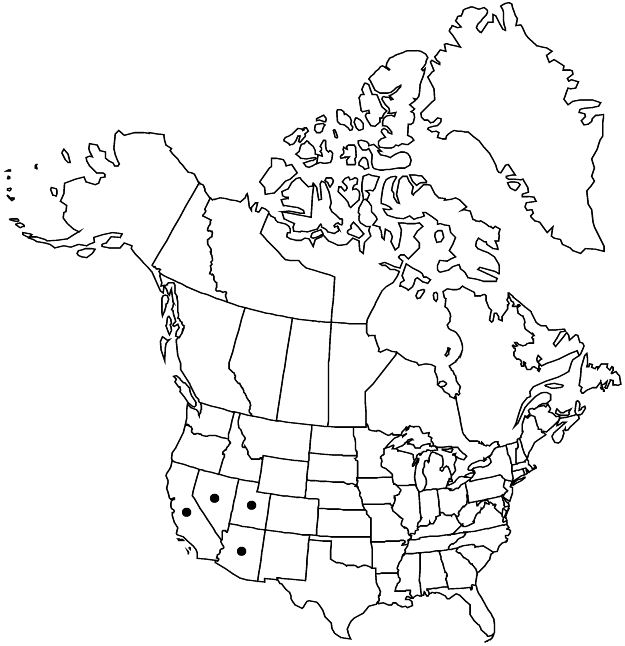Mentzelia obscura
Phytologia 21: 284. 1971.
Plants candelabra-form, 8–45 cm. Basal leaves persisting; petiole present or absent; blade linear-lanceolate to linear, margins usually irregularly deeply lobed, lobes pointed. Cauline leaves: petiole absent; blade ovate-lanceolate to linear, to 15(–22) cm, margins few-lobed or entire. Bracts green, ovate to ovate-lanceolate, 2.9–8.2 × 1.1–1.9 mm, width 1/8–1/2 length, not concealing capsule, margins entire. Flowers: sepals 2–6 mm; petals yellow to orange proximally, yellow distally, 3–8 mm, apex rounded or acute apex; stamens 20–40, 2–7 mm, filaments monomorphic, filiform, unlobed; styles 2–6 mm. Capsules clavate, 11–31 × 1.5–3 mm, axillary curved to 250° at maturity, usually inconspicuously longitudinally ribbed. Seeds 15–50, in 2+ rows distal to mid fruit, tan, usually not, occasionally sparsely, dark-mottled, usually irregularly polygonal, occasionally triangular prisms proximal to mid fruit, surface colliculate under 10× magnification; recurved flap over hilum absent; seed coat cell outer periclinal wall domed, domes on seed edges less than 1/2 as tall as wide at maturity. 2n = 36.
Phenology: Flowering Feb–May.
Habitat: Sandy to rocky washes or slopes, desert scrub, Joshua-tree woodlands, roadsides.
Elevation: 200–1700 m.
Distribution

Ariz., Calif., Nev., Utah, Mexico (Baja California, Sonora).
Discussion
Mentzelia obscura is morphologically intermediate to M. desertorum and M. albicaulis and is known to occur in mixed populations with both species. Reliable discrimination among these species usually requires mature seeds.
Selected References
None.